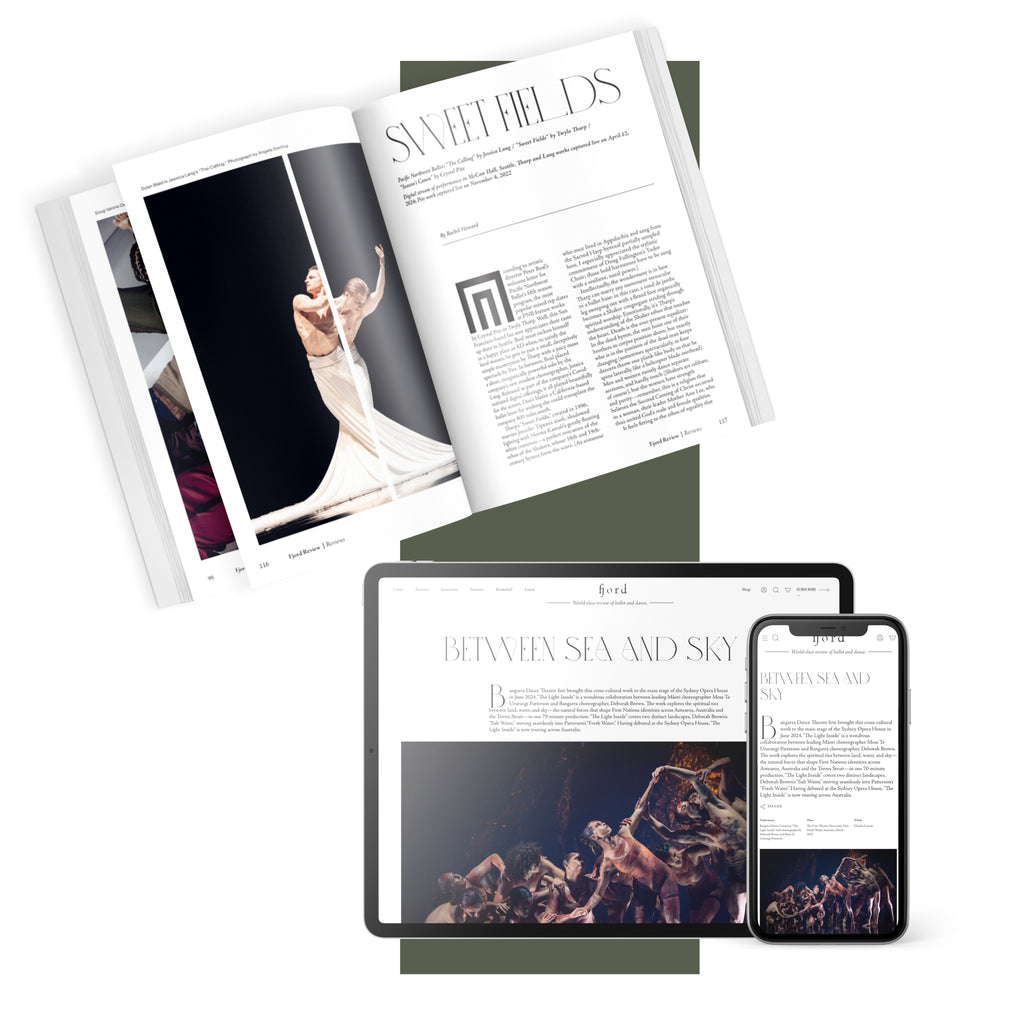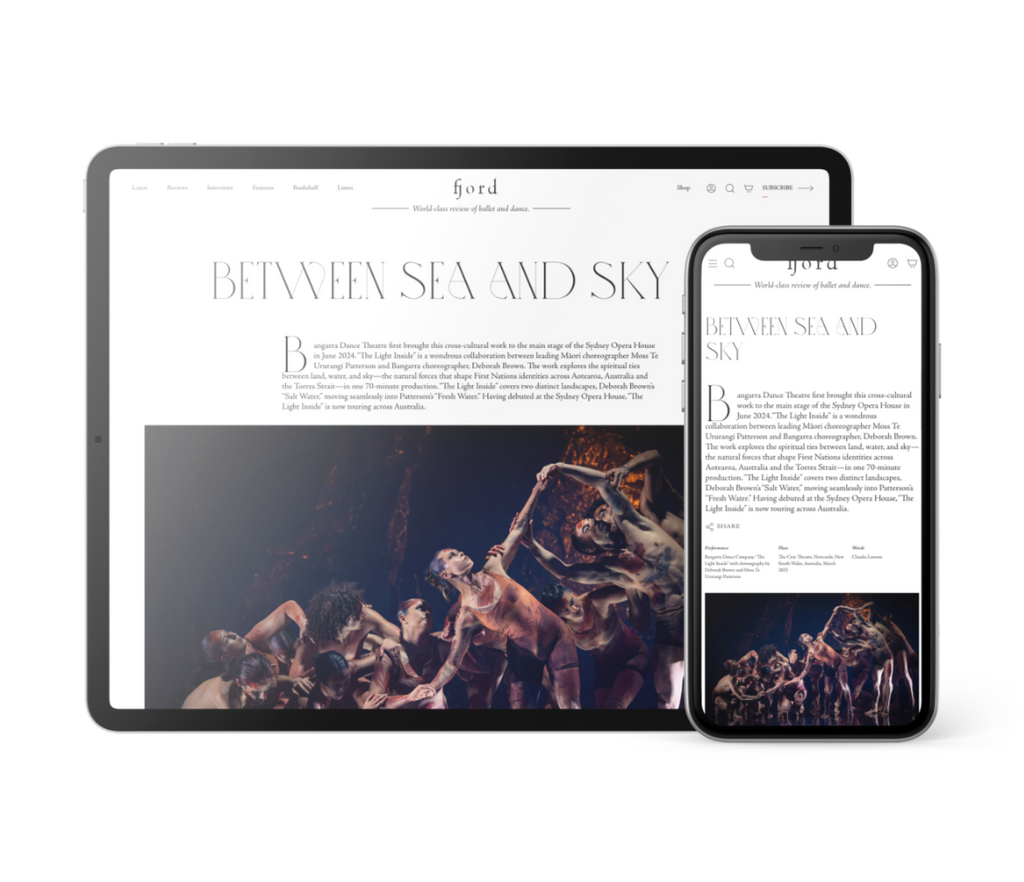Mishima’s Muse
Japan Society’s Yukio Mishima centennial series culminated with “Mishima’s Muse – Noh Theater,” which was actually three programs of traditional noh works that Japanese author Yukio Mishima adapted into modern plays.
Continue Reading
World-class review of ballet and dance.
The curtain rises on Prince Siegfried, asleep and slumped in an armchair. We enter his dream: a mysterious woman dances in the shadows, only to be abruptly seized by a somber, bird-like figure. As the court festivities begin, the prince remains inert, still held within the grip of his vision. This is not the familiar opulent palace of “Swan Lake,” but a minimalist, Gothic-inspired space shaped by lines and shadow. Within the first three minutes, we are unmistakably in Rudolf Nureyev’s world—a world where, as in Classical Greece, originality emerges through subtle, deliberate, and ingenious variation on tradition and form.
Performance
Place
Words



“Uncommonly intelligent, substantial coverage.”
Your weekly source for world-class dance reviews, interviews, articles, and more.
Already a paid subscriber? Login


Japan Society’s Yukio Mishima centennial series culminated with “Mishima’s Muse – Noh Theater,” which was actually three programs of traditional noh works that Japanese author Yukio Mishima adapted into modern plays.
Continue ReadingThroughout the year, our critics attend hundreds of dance performances, whether onsite, outdoors, or on the proscenium stage, around the world.
Continue ReadingOn December 11th, the Alvin Ailey American Dance Theater presented two premieres and two dances that had premiered just a week prior.
Continue ReadingThe “Contrastes” evening is one of the Paris Opéra Ballet’s increasingly frequent ventures into non-classical choreographic territory.
Continue Reading
comments